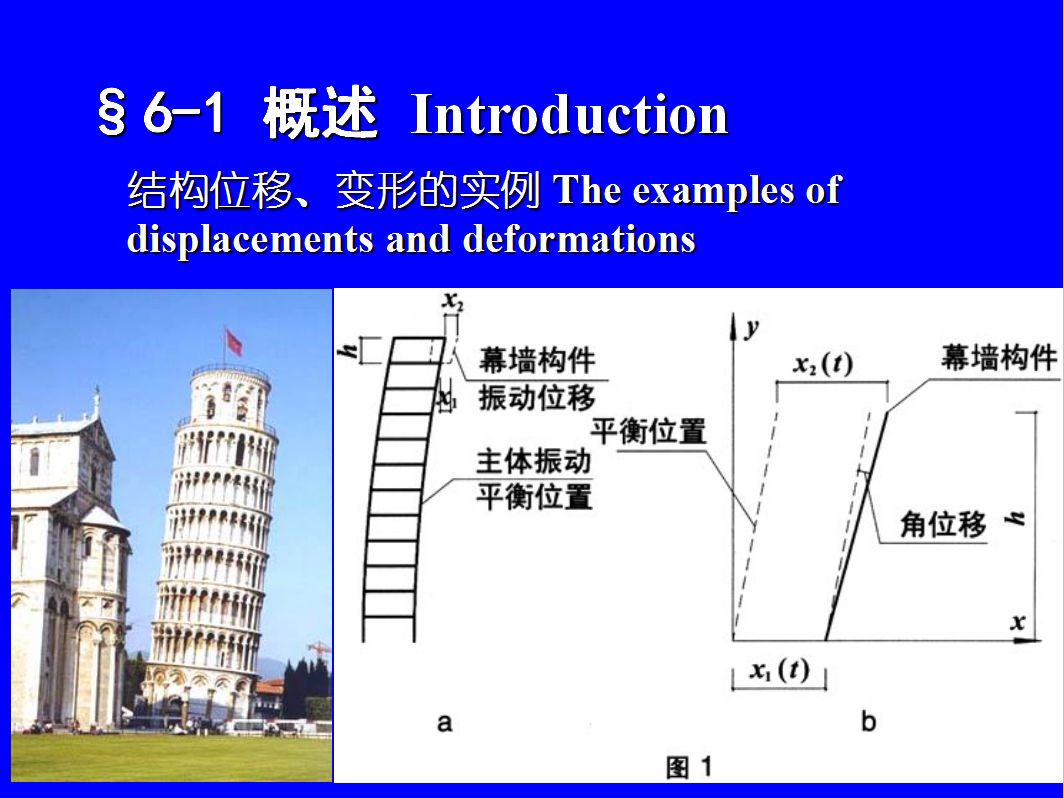1.�Y(ji��)��(g��u)��� Displacements of structures
��λ�ƣ��Y(ji��)��(g��u)ij�c(di��n)�Ƅ�(d��ng)�ľ��x����Linear displacements or translation: the distance of movement of a point alone a line;
��λ�ƣ��D(zhu��n)�ǣ����Y(ji��)��(g��u)��(g��u)��ij�����D(zhu��n)�ĽǶȣ���Angular displacement or rotation:sectional rotation of a member of a structure.
����(du��)������λ�ƣ����c(di��n)֮�g���x׃��
Relative linear displacement: the change of the distance between 2 points.
����(du��)��λ�ƣ��D(zhu��n)�ǣ����ɽ���֮�g�A��׃�� Relative angular displacement:the change of the angle between 2 sections.
2.�V�xλ�Ƶĸ��� Generalized displacements
������M(j��n)����Փ������ʽ�ƌ�(d��o)������ӑՓ�ĸ��N�Y(ji��)��(g��u)λ���ýy(t��ng)һ�ķ�̖(h��o)��(l��i)��ʾ�����Q(ch��ng)��V�xλ�ơ�For the convenience of the proceeding of theoretical analysis and derivation of formulae, we denote all kinds of displacements by , which is termed as generalized displacements
עRemark���V�xλ�ƿ��Կ��ɞ����λ�Ƶij����̖(h��o)���ھ��w��(w��n)�}�б�ʾ���wλ��. Generalized displacements may be looked at as abstract sign, which represents concrete displacement in concrete problems.












